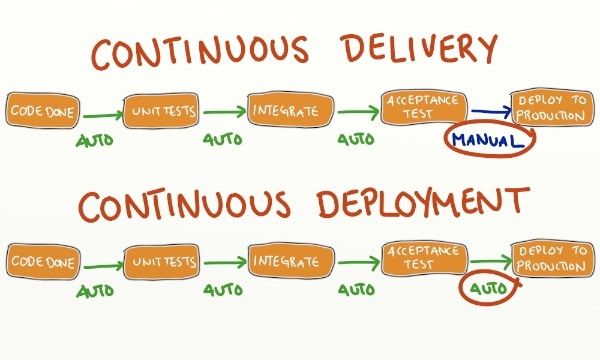In today’s fast-paced tech industry, software development teams are constantly under pressure to deliver high-quality code quickly and efficiently. This is where Continuous Integration and Continuous Deployment (CI/CD) pipelines come into play. CI/CD pipelines are automated processes that allow developers to continuously build, test, and deploy code changes, ensuring that software is always up-to-date and bug-free. In this article, we will explore the benefits of CI/CD pipelines and how they can help streamline the software development process.
What are CI/CD Pipelines?
CI/CD pipelines are a set of automated processes that software development teams use to build, test, and deploy code changes. The main goal of CI/CD pipelines is to speed up the software development process and ensure that code changes are implemented in a timely manner without introducing bugs or errors. This is achieved by automating repetitive tasks such as building and testing code, as well as deploying changes to production environments.
Benefits of CI/CD Pipelines
There are several benefits to using CI/CD pipelines in software development. Some of the key advantages include:
Improved Code Quality: CI/CD pipelines automate the testing process, helping to identify and fix bugs early on in the development cycle.
Increased Deployment Frequency: With CI/CD pipelines, developers can deploy code changes frequently and with confidence, leading to faster release cycles.
Reduced Manual Errors: By automating repetitive tasks, CI/CD pipelines reduce the chances of human error, improving overall code quality and reliability.
Enhanced Collaboration: CI/CD pipelines encourage collaboration between developers and operations teams, leading to a more efficient and streamlined development process.
How CI/CD Pipelines Work
CI/CD pipelines typically consist of several stages, including:
Code Commit: Developers commit code changes to a version control system such as Git.
Build: The CI/CD pipeline automatically builds the code and runs tests to ensure that it is error-free.
Deployment: Once the code has passed the build and test stages, it is automatically deployed to production or staging environments.
Monitoring: CI/CD pipelines monitor the deployed code for performance issues or errors and provide feedback to developers.
Implementing CI/CD Pipelines
Implementing CI/CD pipelines in your software development process can be a daunting task, but with the right tools and strategies, it can greatly improve the efficiency and quality of your code. Some popular CI/CD tools include Jenkins, CircleCI, and Travis CI, which can help automate the build, test, and deployment processes. Additionally, best practices such as writing unit tests, conducting code reviews, and using version control systems are essential for successful CI/CD implementation.
Conclusion
CI/CD pipelines are a crucial component of modern software development, allowing teams to build, test, and deploy code changes quickly and efficiently. By automating repetitive tasks and ensuring code quality, CI/CD pipelines can help streamline the development process and improve overall software quality. Whether you are a small startup or a large enterprise, implementing CI/CD pipelines can help your team deliver high-quality code faster and with fewer errors.
With the right tools and strategies in place, CI/CD pipelines can revolutionize the way you develop and deploy software, leading to more efficient processes and better collaboration between teams. So why wait? Start implementing CI/CD pipelines in your software development process today and reap the benefits of continuous integration and continuous deployment.
